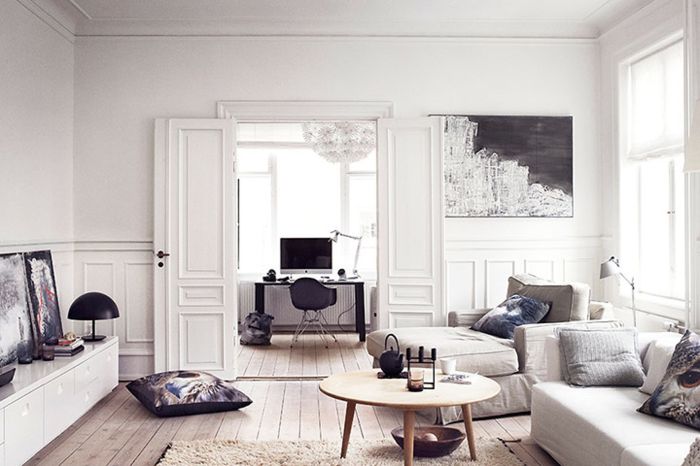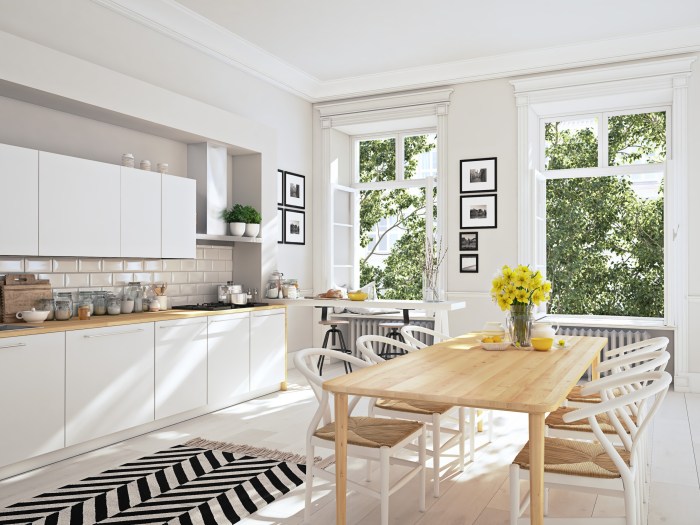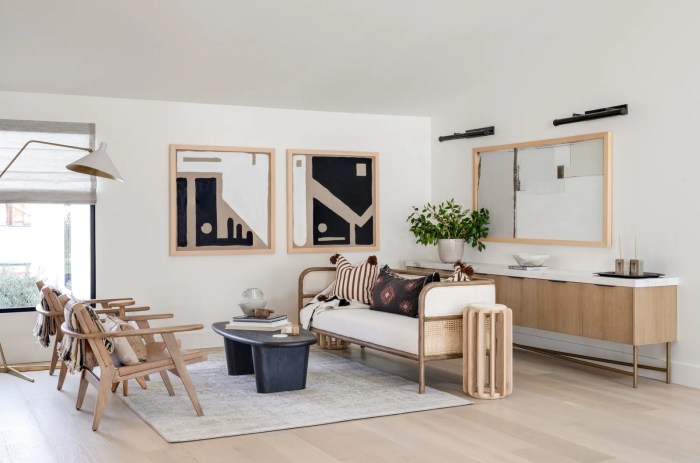Step into the world of Scandinavian interior design, where simplicity meets functionality to create spaces that are both inviting and visually stunning. From iconic furniture pieces to cozy textiles, this style embraces natural elements and a minimalist approach to design.
Let's delve into the key characteristics and concepts that define this popular design aesthetic.
In the following paragraphs, we will explore the elements that make Scandinavian interior design unique, from color schemes to the importance of natural light in creating a harmonious space.
Elements of Scandinavian Interior Design

Scandinavian interior design is known for its simplicity, functionality, and minimalism. It focuses on creating a clean and clutter-free space that promotes a sense of calm and tranquility. The key characteristics of Scandinavian interior design include:
Common Color Schemes
In Scandinavian interiors, you will often find a color palette dominated by whites, grays, and soft neutrals. These colors help to create a bright and airy atmosphere, making the space feel open and inviting. Accents of pastel tones or bold pops of color may be used sparingly to add interest and contrast to the design.
Importance of Natural Light
Natural light is a crucial element in Scandinavian design. Large windows, light-colored walls, and minimal window treatments are common features that allow natural light to flood the space. This not only helps to make the room feel more spacious but also enhances the connection to nature, which is a key inspiration in Scandinavian design philosophy.
Furniture and Decor
Scandinavian interior design is known for its minimalistic approach to furniture and decor, focusing on clean lines, simplicity, and functionality. Let's take a closer look at how furniture and decor play a key role in achieving the Scandinavian aesthetic.
Minimalist Furniture
In Scandinavian interiors, furniture is often chosen for its sleek and minimalist design. Pieces are typically made from light-colored woods like beech, pine, or ash to create a sense of airiness and light in the space. Functionality is also a crucial aspect, with furniture often serving multiple purposes to maximize space.
- Iconic Scandinavian Furniture Pieces:
- 1. The "Wishbone Chair" by Hans Wegner: This iconic chair is a staple in Scandinavian design, known for its elegant and organic shape.
- 2. The "Egg Chair" by Arne Jacobsen: This classic chair is a symbol of mid-century modern design, with its curvy silhouette and cozy feel.
- 3. The "String Shelf" by Nils Strinning: This modular shelving system is a versatile and practical piece that is popular in Scandinavian homes.
Cozy Textiles
To add warmth and texture to the clean lines of minimalist furniture, Scandinavian interiors often incorporate cozy textiles like wool and faux fur. These textiles are used in throws, rugs, and cushions to create a sense of comfort and hygge, a Danish concept of coziness and contentment.
- Examples of Cozy Textiles:
- - Wool Blankets: Soft and warm wool blankets are commonly draped over sofas or chairs to add a touch of warmth to the space.
- - Faux Fur Pillows: Luxurious faux fur pillows are a popular choice for adding texture and coziness to seating areas in Scandinavian interiors.
- - Sheepskin Rugs: Sheepskin rugs are often used to add a soft and inviting touch to hardwood floors, creating a warm and inviting atmosphere.
Functionality and Simplicity
Scandinavian interior design places a strong emphasis on functionality and simplicity, creating spaces that are not only aesthetically pleasing but also highly practical for everyday living. The design philosophy focuses on creating a harmonious balance between form and function, ensuring that every element serves a purpose while maintaining a clean and uncluttered look.
Hygge: The Essence of Coziness
Hygge, a Danish concept that embodies a feeling of coziness, comfort, and well-being, plays a significant role in Scandinavian design. It is about creating a warm and inviting atmosphere that promotes relaxation and contentment. This idea is reflected in the use of natural materials, soft textures, warm lighting, and cozy elements like blankets and candles, all of which contribute to a sense of hygge in the space.
The Role of Simplicity
Simplicity is key in Scandinavian interiors as it helps to create a sense of calm and tranquility. Clean lines, minimalistic furniture, and neutral color palettes are common features that contribute to the overall simplicity of the design. By keeping the space clutter-free and focusing on essential elements, Scandinavian interiors achieve a sense of balance and harmony that promotes well-being and a sense of clarity in the living environment.
Nature and Sustainability

Scandinavian interior design draws heavy inspiration from nature, incorporating elements like natural light, wood, and earthy tones to create a sense of calm and serenity.
Influence of Nature on Scandinavian Design
Nature plays a central role in Scandinavian design, with its influence seen in the use of natural materials such as wood, stone, and leather. These elements bring a sense of warmth and connection to the outdoors into the interior spaces.
Emphasis on Sustainability and Eco-Friendly Materials
Scandinavian design places a strong emphasis on sustainability and eco-friendly materials. Designers often opt for materials that are ethically sourced and environmentally friendly, such as FSC-certified wood, organic cotton, and recycled materials.
Bringing Elements of Nature Indoors
- Use natural materials: Incorporate wooden furniture, stone accents, and wool rugs to bring the essence of nature indoors.
- Maximize natural light: Keep window treatments minimal to allow natural light to flood the space, creating a bright and airy atmosphere.
- Add greenery: Introduce houseplants to add a touch of greenery and life to your space, further connecting it to nature.
- Earth tones: Opt for a color palette inspired by nature, including shades of green, brown, and beige to evoke a sense of tranquility.
Final Conclusion

In conclusion, Scandinavian interior design offers a blend of nature-inspired elements, sustainability, and cozy textures that come together to create a warm and inviting atmosphere. By prioritizing functionality and simplicity, this design style continues to captivate homeowners and interior design enthusiasts alike.
FAQ Insights
What are the key characteristics of Scandinavian interior design?
Scandinavian interior design is known for its minimalist approach, use of natural elements, and emphasis on functionality.
How does "hygge" influence Scandinavian design?
The concept of "hygge" emphasizes coziness and comfort, which are key aspects of Scandinavian interior design.
Why is natural light important in Scandinavian interiors?
Natural light enhances the bright and airy feel of Scandinavian spaces, contributing to the overall ambiance.
What are some iconic Scandinavian furniture pieces?
Examples include the Egg chair by Arne Jacobsen and the Wishbone chair by Hans J. Wegner.
























